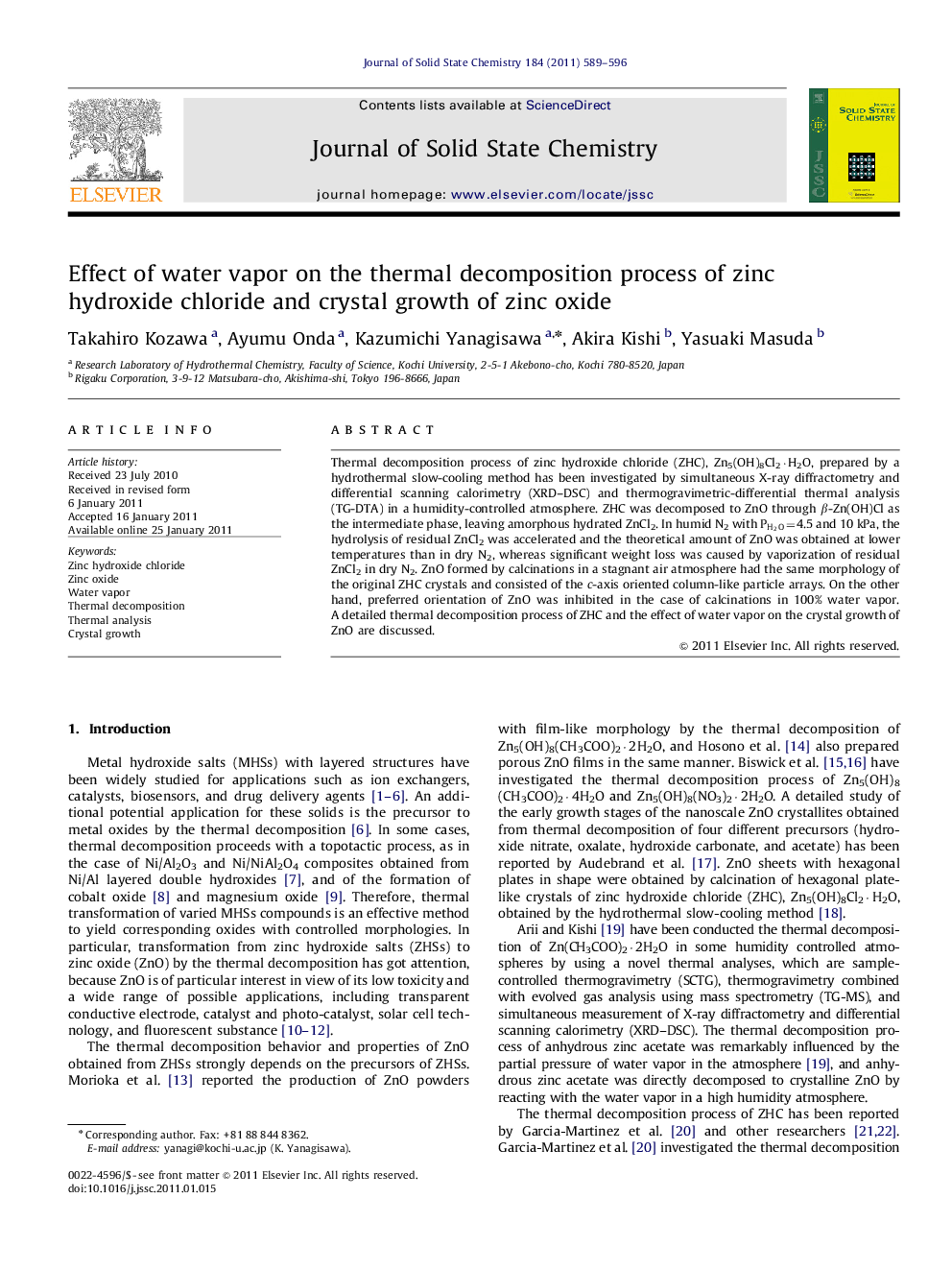| کد مقاله | کد نشریه | سال انتشار | مقاله انگلیسی | نسخه تمام متن |
|---|---|---|---|---|
| 1333069 | 979064 | 2011 | 8 صفحه PDF | دانلود رایگان |

Thermal decomposition process of zinc hydroxide chloride (ZHC), Zn5(OH)8Cl2·H2O, prepared by a hydrothermal slow-cooling method has been investigated by simultaneous X-ray diffractometry and differential scanning calorimetry (XRD–DSC) and thermogravimetric-differential thermal analysis (TG-DTA) in a humidity-controlled atmosphere. ZHC was decomposed to ZnO through β-Zn(OH)Cl as the intermediate phase, leaving amorphous hydrated ZnCl2. In humid N2 with PH2OPH2O=4.5 and 10 kPa, the hydrolysis of residual ZnCl2 was accelerated and the theoretical amount of ZnO was obtained at lower temperatures than in dry N2, whereas significant weight loss was caused by vaporization of residual ZnCl2 in dry N2. ZnO formed by calcinations in a stagnant air atmosphere had the same morphology of the original ZHC crystals and consisted of the c-axis oriented column-like particle arrays. On the other hand, preferred orientation of ZnO was inhibited in the case of calcinations in 100% water vapor. A detailed thermal decomposition process of ZHC and the effect of water vapor on the crystal growth of ZnO are discussed.
Thermal decomposition process of zinc hydroxide chloride (ZHC), Zn5(OH)8Cl2·H2O, has been investigated by novel thermal analyses with three different water vapor partial pressures. In the water vapor atmosphere, the formation of ZnO was completed at lower temperatures than in dry.Figure optionsDownload as PowerPoint slideHighlights
► We examine the thermal decomposition of zinc hydroxide chloride in water vapor.
► Water vapor had no effects on its thermal decomposition up to 230 °C.
► Water vapor accelerated the decomposition of the residual ZnCl2 in ZnO.
► Without water vapor, a large amount of ZnCl2 evaporated to form the c-axis oriented ZnO.
Journal: Journal of Solid State Chemistry - Volume 184, Issue 3, March 2011, Pages 589–596